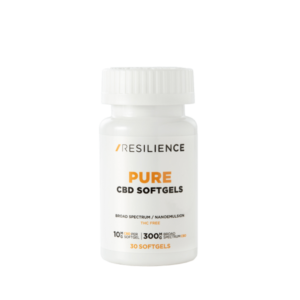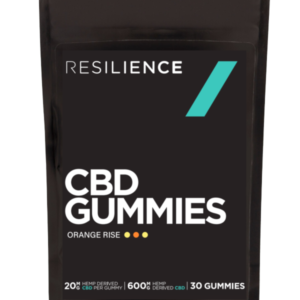
When a Dog Prevaricates
When they can, dogs hide their pain. It is instinctual, a throwback to when dogs lived in the wild, a time when being infirm meant being vulnerable to attack. To act like nothing was wrong increased the chances of a better outcome, that outcome being survival.
This misunderstood behavior gave humans, including some veterinarians, the idea that dogs do not feel pain or that a dog’s pain is lesser than the pain felt by humans. There was a time when, following surgery, dogs were sent home without pain medication.
HARMFUL TO HEALTH
Pain is a voice saying that something is wrong. That voice should stop us from doing things we normally do and make us rest. But it often does not work that way.
Dogs, and too often, people, continue on, the pain becoming just another part of life. The body, meanwhile, keeps experiencing the stress that the pain causes. In turn, the stress causes inflammation.
Chronic stress increases the risk of real physical disorders.
Dog behavior expert, Stanley Coren, in a Psychology Today article, says that “the tension that the state of pain-related stress induces can decrease the animal’s appetite, cause muscle fatigue and tissue breakdown, and also rob the dog of needed, healing sleep. In the end, the dog is exhausted as well as distressed, and this reduces the body’s ability to heal.”
WHAT IS GOING ON?
To defend against stress, the body, among other things, will release stress-related hormones/chemicals. The heart will beat faster, adrenaline will flood the body, the rate of metabolism will change, and the immune system will rush into action.
Of course, hormones are a part of how the body functions, but when too much or too little of a particular hormone is produced, the body falls out of balance.
Which means that the Endocannabinoid System (ECS) is out of balance. But more on that later.
Cortisol, for example, is a hormone that bodies produce when they find themselves in stressful situations. We – and our dogs – need cortisol. But if the stress continues and too much is produced, there will be an adverse effect.
Tissue throughout the body will be less sensitive to the hormone so inflammation will increase; tissue can breakdown leading to organ faiures; and the immune system, too, will stop doing its job as cortisol works against the body.
WHAT IS INFLAMMATION?
Inflammation can be your best friend, or it can be ‘the enemy’.
Acute Inflammation
When there is a cut on a finger or paw or a leg gets banged and there is redness and swelling, that is inflammation working in your defense. The pain was sudden, or acute, and the response was immediate.
That inflammation is the immune system sending out white blood cells to protect, whether the culprit is a cut, pneumonia, or a toxin. The infections that might result need to be stopped before they turn into something with dire consequences.
Chronic Inflammation
The other type of inflammation is chronic and prolonged. How long it lasts depends on whether the body can repair itself. Chronic inflammation can be caused by, among other things:
- Exposure to an irritant like an industrial chemical that is inhaled over a long period of time and that the body cannot break down.
- An inability to rid the body of whatever may be causing an acute inflammation. Think tuberculosis or parasites.
- The immune system mistakenly going after healthy tissue, seeing it as something foreign.
The immune system is on alert and constantly working. If it overworks, it can lead to a number of illnesses and, often, chronic pain.
The ECS and the cannabinoid CBD can be of help in controlling the immune response.
CONTROL THE PAIN
Once we know that a dog is in pain, whether the pain is a result of injury, surgery, or an illness, a dog will gain from pain management. If the pain is controlled, a dog – or person –
- will experience less stress
- breathe easier
- recover faster
- eat and drink in the way they were before the pain
- be less aggressive
- have less of a chance of infection following surgery
- experience good health sooner.
CBD AND PAIN
Resilience CBD strongly advises visiting a veterinarian when a dog is in pain, but we also believe that CBD can be an invaluable tool, helping dogs in pain, especially those suffering from chronic arthritis and joint pain.
One dog website surveyed 455 dog owners asking if giving their dogs CBD had helped with pain. Fifty percent said that it was highly effective and another 30% said that it was somewhat effective. That means that a whopping 80% saw their dogs experience pain relief as a result of taking CBD.
An article published by Harvard University references a study that appeared in the European Journal of Pain. The study showed that a topical CBD helped animals to lower pain and inflammation due to arthritis. “Another study,” the article said, “demonstrated the mechanism by which CBD inhibits inflammatory and neuropathic pain, two of the most difficult types of chronic pain to treat.”
CBD AND THE ECS
The Endocannabinoid System helps keep our bodies in balance, helps maintain homeostasis. It is made up of:
- Cannabinoid receptors found throughout the body
- their ligands – or endocannabinoids
- enzymes that the body produces.
It seems like magic, doesn’t it? How could a cannabinoid like CBD – or even a group of cannabinoids – not only ease pain, but prevent pain?
It becomes less magical when we realize that the ECS is all about those receptors, primarily CB1 and CB2 receptors found in our nervous system and organs: in the pancreas, liver, and gall bladder as well as in brain stems and even in bone marrow.
CB1 receptors inhabit the circulatory system – all the vessels that carry blood and oxygen throughout the body, keeping the body alive. The gastrointestinal tract where we turn food into energy and the reproductive organs also have CB1 receptors, as do brains, lungs, and muscles.
CB2 receptors live in part of the brain, in skin and bone tissue, and in the spleen.
The ECS affects every part of the body, regulating its actions, and keeping it in balance – the whole of it. If a body is in balance, it will not become inflamed and there will be nothing to cause pain.
CBD, THE SAFE ALTERNATIVE
Now that we know that the ECS works together with other systems in the body to control pain, doctors are starting to view cannabinoids as alternatives to prescription medication used for chronic pain management.
One study concludes that “chronic pain often requires a polypharmaceutical [a combination of drugs] approach to management, and cannabinoids are a potential addition to the arsenal of treatment options.”
With prescription medications, there is the specter of side effects, of possible dependency on opioids and liver or kidney damage – even renal failure. This is especially true for immune compromised and aging dogs where medication may need to be taken as part of long-term, chronic illness management. Gastrointestinal tract issues may also be a side effect.
CBD, on the other hand, offers anti-inflammatory properties without side effects or an accompanying high.
WHEN IN PAIN, A DOG…
People – most of the time – know that their pain indicates a visit to the doctor. A dog knows no such thing, instead reverting to that primal urge to hide pain.
“Thus,” writes Dr. Coren, “our pet dogs still appear to act in a stoic manner. They suppress many of the more obvious signals of pain and injury to protect themselves and their social standing in their pack. They hide their pain to appear to be more in control of the situation, but unfortunately, because of this, it is often difficult for humans to recognize when our dogs are hurting.”
If we are ill, our dogs know. Whether it is because they pick up a change in smell or read our expressions, they know. We, however, even those of us who believe that we understand every nuance of our dog’s behavior, may miss subtle signs of distress.
Sad as it is to realize, a dog may wait to be left alone before whimpering, crying, or even baying. If we understand and know what to look for, we can try to be just as tuned in to our dogs as they are to us.
Some subtle, and not so subtle, nuances when a dog is in pain:
- Its behavior will change. Its heart rate and breathing may even change, and the pupils of its eyes may enlarge or contract.
- It may seem more aggressive as it protects its body. This may include growling as you get near or even snapping at you.
- You may see that your dog is keeping his body in a position that may be unusual but causes less pain, and your dog will not move from that position.
- If the dog does move, the movements will be stiff, as if holding its body in check.
And then your dog may:
- avoid or hide from you and other animals
- be lethargic and less alert
- be quieter and stiller than usual, or…
- pace restlessly
- pant or breathe shallowly
- shiver
- limp
- whine or yelp
- lick one spot repeatedly
- appear stressed
- stop eating
WHAT YOUR DOG WILL NOT DO
Show pain by barking!
CALL THE VETERINARIAN
Any of the changes mentioned above may be a sign of pain, but if your dog is anxious, that anxiety may manifest in the same way pain does. Overall poor health may also be a cause of lethargy or stress.
The impulse may be to give a pain reliever, but over-the-counter medications meant for humans are toxic for dogs.
If you are concerned about your dog’s behaviors, including aggression, call your veterinarian sooner rather than later. Your veterinarian will find out why your dog is hurting and help you to help your dog.
Of course, we believe that Resilience CBD oil has the potential to help. More and more veterinarians are hearing anecdotal evidence from pet owners, and some have begun to recommend CBD as a pain mediation alternative.
WHAT IS CAUSING THE PAIN?
Pain in older dogs is so often caused by joint pain/arthritis, but there are a host of other illnesses – like diabetes – that can beset dogs of any age and cause chronic pain as opposed to acute pain.
Acute pain will include the conspicuously evident broken bone or gauged hole – a soft tissue injury; add to that a recent surgery or a shot that might have caused discomfort.
Whether chronic or acute, rest assured that your dog feels that pain.
Pain can be caused by any of the following, but in truth, any time there is inflammation and/or cell damage, pain may occur.
- Arthritis
- Back issues including slipped disk
- Cancer
- Cruciate Ligament Damage
- Dental/Periodontal Disease
- Diabetes
- Ear Infections
- Eye diseases including glaucoma
- Gastritis and other digestive problems
- Heart Disease
- Joint Damage
- Kidney Stones
- Pancreatitis
- Skin Problems
- Soft Tissue Injuries
- Sprains
- Surgery
- Urinary Tract Infection
YOUR DOG AND CHRONIC JOINT PAIN
One in five senior dogs will suffer from joint pain and arthritis while others will feel the effects of congenital diseases like hip dysplasia. Still others will suffer injuries or require surgeries.
Can CBD help? The Arthritis Foundation thinks so: “Animal studies have suggested that CBD has pain-relieving and anti-inflammatory properties…”
The most quoted study when talking about osteoarthritis pain is the Cornell University “randomized placebo-controlled, veterinarian, and owner blinded, cross-over study” published in 2018. Dogs were broken into two groups and, over a period of four weeks, given either 2mg/kg of CBD oil or a placebo of oil with no CBD twice a day.
Let’s take a minute here to note that when animals show evidence of pain relief, for example by no longer limping, there is no chance that they are experiencing a placebo effect. They have no way of understanding that they may have received oil with no CBD.
Researchers saw no adverse side effects, but “activity scores showed a significant decrease in pain and increase in activity…with CBD oil.”
Another study, this one by Liberty Leaf, concluded that: “Results from the ESEV-managed, randomized, placebo-controlled clinical trial demonstrated that dogs with clinically diagnosed OA receiving a daily dose of only 0.3 mg/kg of proprietary CBD-infused oil formulation for four weeks exhibited significantly reduced pain and improved functional performance.”
Anecdotally, we know that Resilience CBD users have been able to decrease prescription medications once their dogs begin taking CBD. You may want to read Misty’s story or Sig’s.
Beyond helping with pain, a study on rats showed that CBD might even prevent pain and nerve damage.
HOW TO HELP YOUR DOG
Start by taking notes so that you can tell your veterinarian exactly what is going on.
With your veterinarian, create a plan of action which may mean reducing activity – taking shorter walks or making sure that your dog does not need to jump to catch the ball.
Suggest CBD as a supplement. Your veterinarian may not be familiar with CBD, but, in this window of time, many veterinarians have heard the same anecdotal evidence that we at Resilience CBD have heard: CBD helps dogs deal with pain.
Resilience CBD believes that our CBD oil will benefit your dog no matter what is causing the pain. Again, we have read the studies and listened to stories from our family of customers.
We hope that this has been helpful. If you have questions, please contact us at contact@resiliencecbd.com. After all, we love your dogs almost as much as you do!
 Written by: Michael Tatz | Linkedin
Written by: Michael Tatz | Linkedin
Michael Tatz is the Co-Founder of Resilience CBD, and a passionate leader in the health & fitness world helping others rise to and crush their wildest goals. A former Division 1 college wrestler, Army Officer, and investment manager at Goldman Sachs, he has pushed his body and mind to the limits on the mats, dressed in camo, and in the boardroom.
Today, he spends his time leading Resilience CBD to develop the absolute best recovery products for athletes everywhere. Resilience was founded after CBD personally impacted Michael’s life, and the brand was built to partner with everyday athletes in pursuit of conquering their most difficult challenges, rebounding after their toughest performances, and rising to their goals that once seemed impossible.






